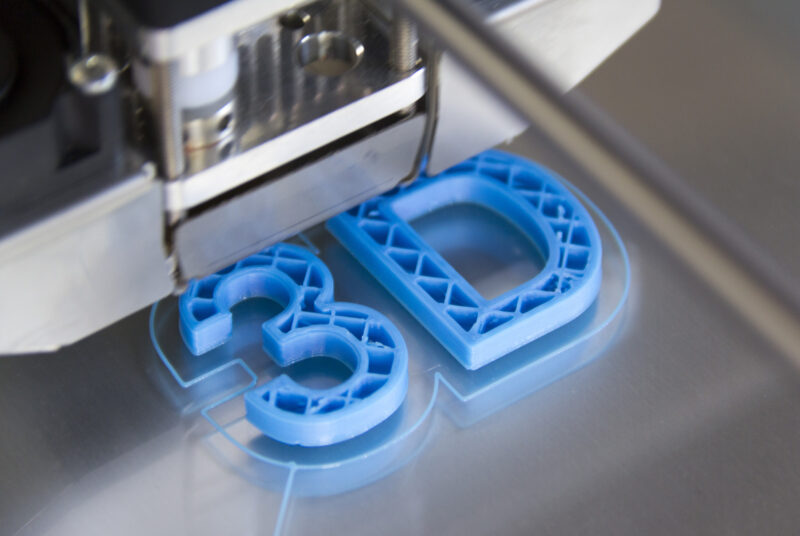
The Complete Guide to Buying 3D Printers: Everything to Know
3D printers are the future of manufacturing. They allow for objects to be created in a matter of hours rather than days or weeks.
The global market for 3D printing services and products is valued at over 10 billion dollars this year. The industry is expected to continue growing at almost 20% per year.
This guide will explain how 3D printers work, what you can do with them, and why they are essential. We’ll also go over the different types of 3D printers available on the market today and provide an unbiased comparison between their features!
Keep reading to discover everything you need to know about buying 3D printers.
3D Printers: The Basics
A 3D printer works in much the same way as a projector. It takes digital information (in this case, from a computer) and prints it out, layer by layer, to create a three-dimensional object.
Each layer is only microns thick, so the final product is very delicate. It’s also worth noting that not all printers can print in multiple colors—most are limited to a single color.
There are two types of printers: Fused Deposition Modelling (FDM) and Selective Laser Sintering (SLS).
FDM printers melt plastic filament, then extrude through a nozzle to form the desired shape. This type of printer is more common and will find in most homes and offices.
SLS printers use lasers to fuse powdered material, layer by layer, to create an object. They produce higher quality products than FDM printers, but they’re also more expensive.
Now that you know how a printer works let’s look at what you can do with one!
What Can I Print With a 3D Printer?
The world of possibilities for what you can print is growing every day. One person used a printer to create an artificial hand for his daughter, and another completed prosthetic feet out of styrofoam!
You could use your printer to make anything from jewelry to toys or furniture—the opportunities are endless!
You’re limited only by the types of materials that you put in your printer. Your printer probably came with PLA filament, which prints at relatively low temperatures (between 185°C – 220°C).
However, there are several other kinds available on the market today: thermoplastic elastomers (TPE), nylon 12, polycarbonate, or even high-temperature resin.
Different Materials
These different materials allow objects to be printed at higher temperatures, which means one can print things like gears and other moving parts. You also have the option of printing with multiple materials at once.
For example, you could use nylon as a structural material for your part and polycarbonate for its finished appearance.
These different filament types are worth looking into if you plan on using your printer frequently. Some printers even come standard with more than one type!
There’s no limit to what you can create when it comes to designing or modeling an object—all that matters is how much time and effort (and money) you’re willing to put in. It should go without saying: don’t forget about safety precautions!
If something catches fire while being printed, there isn’t anything stopping it from spreading. Make sure you have a fire extinguisher nearby, and never leave your printer unattended while it’s printing!
How to Choose When Buying 3D Printers
Now that you know all about what a printer can do, it’s time to find the right one for you. Buying 3D printers isn’t just pointing your finger.
Here are some factors to consider when shopping for your new machine:
Printer Size
How much space do you have available? Some printers are tiny, while others take up an entire desk!
Printing Speed
How quickly does the printer need to produce objects? Faster printers come at a higher price tag.
Print Quality
What level of detail is essential to you? All printers produce different levels of detail and resolution.
Filament Type(s)
What kind of materials will you be printing with? Not all printers use the same filament types.
Additional Features
Does the printer come with a heated bed? What about a built-in screen? These features can add to the cost of the printer.
Once you’ve answered these questions, you’ll be able to start browsing for printers that fit your needs! Learn more about high-volume production to get the answers you’re looking for.
Considerations to Make When Buying a 3D Printer
Printers can vary significantly in price, and it’s important to know what you’re getting for your money. Make sure you consider all of the essential features before making a purchase.
It’s essential to read reviews and compare printers before settling on one. There are a lot of choices out there, and not every printer is suitable for everyone.
Just because a printer is cheaper doesn’t mean it’s the best option for you. Make sure to consider all of the factors involved in choosing a printer before making your decision.
Not all printers are the same, and some are better suited for specific tasks than others. It’s essential to do your research before buying a printer. Not all printers are created equal, and you don’t want to end up with a machine that doesn’t suit your needs.
If you’re not sure how something works or if you have any other questions, don’t be afraid to ask! The manufacturers of these machines are more than happy to help.
The Right 3D Printer for You
Now that you know everything there is to know about choosing a printer, it’s time to take the plunge! You’ve learned how much printers vary, as well as what features are essential when shopping for one. Thus, buying 3D printers should be easy.
If you would like to learn more about modern technologies, check out some of our other amazing articles.
